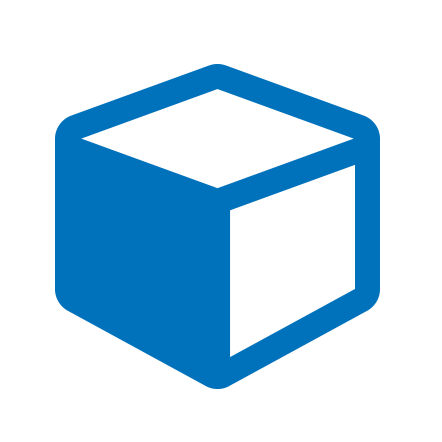Lu-177 DOTATATE Anonymized Patient Datasets
This collection is comprised of a number of works that collectively represent the imaging studies and information necessary for dosimetric analysis of a patient treated with Lutathera. All works may be used as standalone datasets or in conjunction with the others in this collection depending on the analysis performed. Files are stored using the DICOM standard widely accepted for storage and transmission of medical images and related information. All patient private information has been anonymized using MIM commercial software (MIM Software Inc.).
Data from 2 patients, referred to as patient 4 and patient 6, has been provided in this collection and is divided among 6 works as outlined below:
1) Pre-Therapy Diagnostic Images.
Description: Patient diagnostic scans performed prior to Lutathera treatment. Used for identifying lesions and measuring progression. Note that the date of the baseline scan may be several months before the Lutathera treatment and changes in the anatomy are possible.
Files: (1) Ga68 Dotatate PET/CT, Either: (1) MRI, (1) standalone diagnostic CT
2) Planar Whole Body Scans.
Description: Planar whole body Lu-177 scans taken at 4 time points within a week after treatment. Two views (Anterior and Posterior) and 3 energy windows (one main window at 208 keV and 2 adjacent scatter windows) are available for each time point. The units of this image is counts. Energy window information, acquisition data/time and duration can be found in DICOM header.
Files: (6) individual images at each time point (24 total images per patient)
3) SPECT/CT Scans.
Description: Lu-177 SPECT/CT scans at 4 time points within a week after treatment (same time points as the planar scans). Images were acquired on a Siemens Intevo system and reconstructed using xSPECT Quant. The units of this image is Bq/mL. Information on the reconstruction, acquisition date/time, duration, Lu-177 administration time and activity can be found in the DICOM header.
Files: (1) Folder with reconstructed SPECT slices per time point (4 folders total per patient), (1) Folder containing co-registered CT slices per time point (4 folders total per patient)
4) Lesion and Organ Volumes of Interest.
Description: DICOM RT structure files containing organ and lesion volumes of interest (VOI) that were defined on the CT of the scan1 SPECT/CT in 3). Organs were defined using semi-automatic tools (atlas based and CNN-based) while lesions were defined manually by a radiologist guided by baseline scans. Only lesions >2 cc were defined.
Files: (1) File containing organ contours, (1) File containing lesion contours
5) Time Integrated Activity Maps.
Description: A DICOM file containing the time-integrated activity map over all 4 time points within a week after treatment. This combines the SPECT/CT scans provided in 3) into a single integrated activity map. This map was generated via the MIM MRT Dosimetry package: The 4 time points were registered to the reference SPECT scan (time point 1) using a contour intensity based SPECT alignment and the voxel-level time-activity data was fit using exponential functions. Voxel-level integration was performed to generate the TIA map. The units of this image is Bq/mL * sec.
Files: (1) Folder with Time-integrated activity image per patient
6) Projection Data and CT based Attenuation Coefficient Maps.
Description: SPECT projection data for each of the 4 Lutathera scans taken within a week after treatment is provided in 3 forms: unaltered, Siemens [Reformatted], and Siemens [Advanced]. The difference between the Projections and the [Advanced] Projections is that the [Advanced] consists of uncorrected raw projection data and the other the corrected projection data (e.g. camera uniformity corrections). The [Advanced] projections are used in xSPECT reconstruction (where all corrections are done during the reconstruction), while the other is used in Flash 3D reconstruction. CT-based attenuation coefficient maps (mumaps) are provided for each of the 4 scans taken within a week after treatment. Two methods are provided for each mumap: xSPECT and F3D as the matrix size is different for the 2 cases (256 x 256 for xSPECT and 128 x 128 for Flash3D).
Files: (3) Folders containing raw SPECT projections, (2) Folders containing CT attenuation coefficient maps (mumaps)
Works (6)
| Title | Date Created | Visibility | |
|---|---|---|---|
| 2020-12-24 | Open Access | ||
| 2021-02-05 | Open Access | ||
| 2020-12-24 | Open Access | ||
| 2020-12-24 | Open Access | ||
| 2020-12-24 | Open Access | ||
| 2020-12-24 | Open Access |
